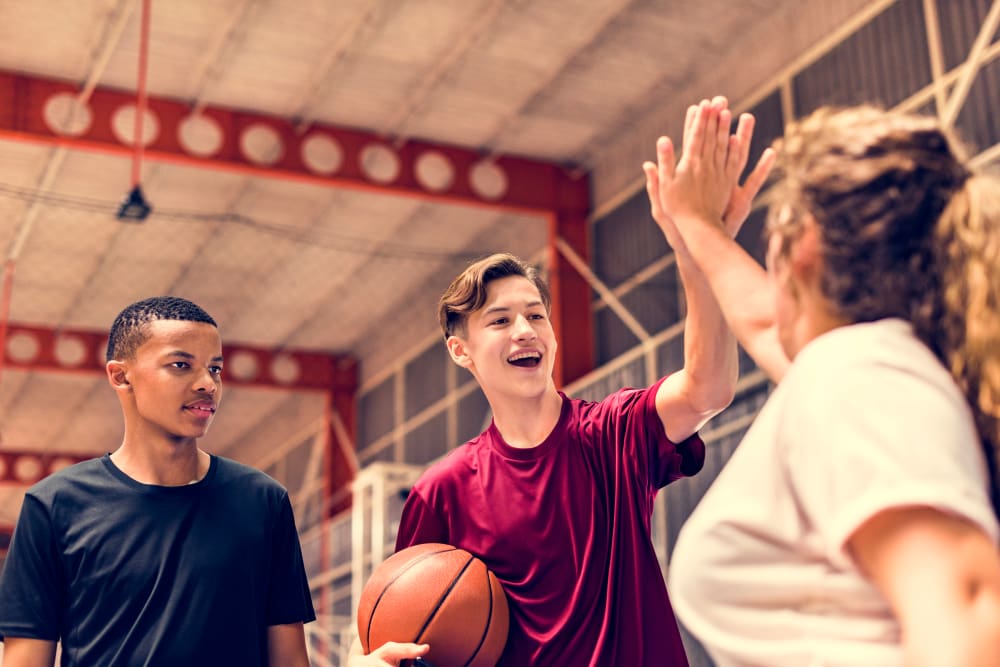In the United States, around 8 million high school students play in sports. Less than 6 percent of students will participate in college sports or try to get sports scholarships. If you’re in high school and believe that getting an athletic scholarship is impossible, think again. Both NCAA and NAIA offer financial aid called athletic scholarships for college athletes. If getting a sports scholarship fulfills your two dreams of going to college and playing sports, read on for the 7 best ideas to score one for yourself.

7 Best Tips To Get A Sports Scholarship
Get an early start and gather information and items.
Scout out athletic scholarship opportunities by collecting as much information as you can as early as you can. How early? Begin as soon as you get your first-season statistics. High school is the ideal time to choose a sport and put in time and effort to become the best at it. The college coaches you must impress (see Tip #2) look for your true potential, starting with this decisive time as you build your athletic resume. Before your senior year, you need to gather some things for your resume, such as athletic stats, academic transcripts, SAT/ACT scores, and highlight or skills videos.
Start contacting college coaches.
Once you’ve started a solid athletic resume, you can already kick off your sports scholarships application by emailing it to coaches as suggested by the NCAA. Don’t get lost in the crowd by ensuring you provide everything needed especially highlight and/or skills videos with the relevant links. Videos are an effective way for college coaches to check you out quickly (see Tip #3). You can also instantly grab their attention via your email subject line. Highlight your key statistic, but don’t forget your name, current high school level, and position. For example, “Sarah Smith, High School Junior, Pitcher, 90 MPH fastball.” As with a job resume, avoid mass mailing it by writing a personalized email.
Create a standout athletic resume highlight video.
If you want college coaches to scout you, a highlight video will grab their attention fast. However, if you don’t impress them, they will just as quickly pass. If you want sports scholarships, your highlight video needs to impress coaches. Here’s what they’re looking for. First, your highlight video should be short (between 5-7 minutes) and showcase your athletic abilities. To catch a college coach’s attention, use your best play footage first. Next, show your athletic versatility by highlighting your ability to perform well in unique positions and challenging situations. Finally, practice footage is as welcome as game footage.
Research the program that you fit in.
Before you start researching which colleges you will apply to, first understand what Division Level is ideal for you. It isn’t a one-size-fits-all situation. For example, very few qualify to compete in NCAA Division I athletics. If you’re applying to UCLA (NCAA Division I) and aiming for sports scholarships, it’s not impossible but is a challenge. To better understand how you’ll compete, get evaluated by a third party, or attend a summer camp/showcase with other college-bound athletes (see below). Learning both the NCAA and NAIA rules and regulations might pare down your school options but shall lead you to the best fit for you in the long run.

Attend summer camps and showcases.
These camps and showcases not only help you determine where you fit in Division-wise but also offer the perfect opportunity to gain exposure and sports scholarships. By exclusive invite or open call, recruiting camps usually welcome high school and college prospects who have a broad range of athletic ability levels. However, many of the coaches in attendance come to watch the players they are already talking to. It isn’t really where you’ll be discovered (start with Tip #2 first). Meanwhile, recruiting showcases are an even more exclusive event that features the crème de la crème prospects nationwide.
Don’t neglect your GPA.
Getting sports scholarships doesn’t mean you can ignore academics. They go hand-in-hand. A winning academic record, including your GPA, SAT/ACT score, and references, is a big plus in the overall recruiting process. The reason is that the athletes who meet the minimum qualifications to receive an academic scholarship on top of their sports one won’t affect the coach’s athletic budget. The NCAA requires a minimum 2.3 GPA for playing as a freshman and a minimum GPA based on earned credit hours to continue playing. Simply meeting the minimum requirement won’t guarantee you get the scholarship either. You will need to consistently impress academically and athletically.
Register with the NCAA and NAIA, and don’t miss any deadlines!
To be cleared for sports scholarships, you need to register with the NCAA and NAIA Eligibility Centers. This will let college coaches know that you are eligible. First, research which core courses you must take and what grades you must maintain for academic eligibility. You should plan your academic calendar around these requirements. Based on the courses you chose, you will also need to take the corresponding tests and meet the minimum score requirements. Remember, applying for college admissions and winning a scholarship is not the same. You need to stay on top of both games by not missing any deadlines.

Is it Difficult To Get Sports Scholarships?
If you followed our seven best tips above and received an athletic scholarship–congratulations! Only 2% of high school student-athletes are granted one. The average value of the scholarship they get is less than $11,000. On the other hand, there are many other untapped athletic scholarship opportunities at smaller Division 2 and Division 3 schools. So, don’t give up on your lifelong dream if you don’t qualify immediately. Find where you’ll fit in the best (Empowerly can help you).
